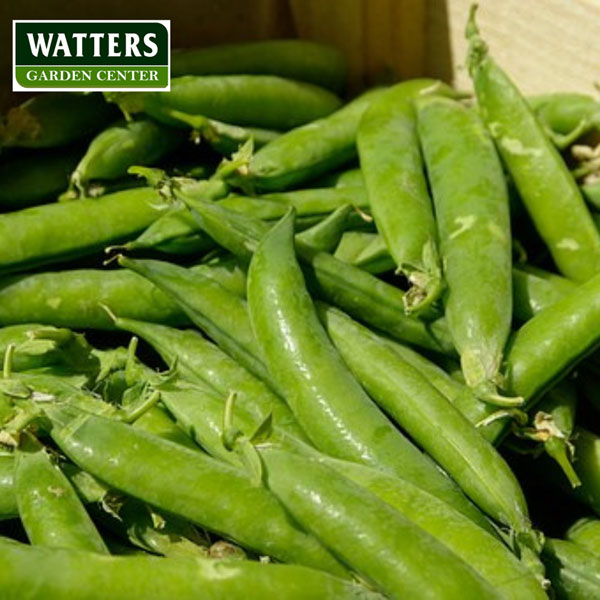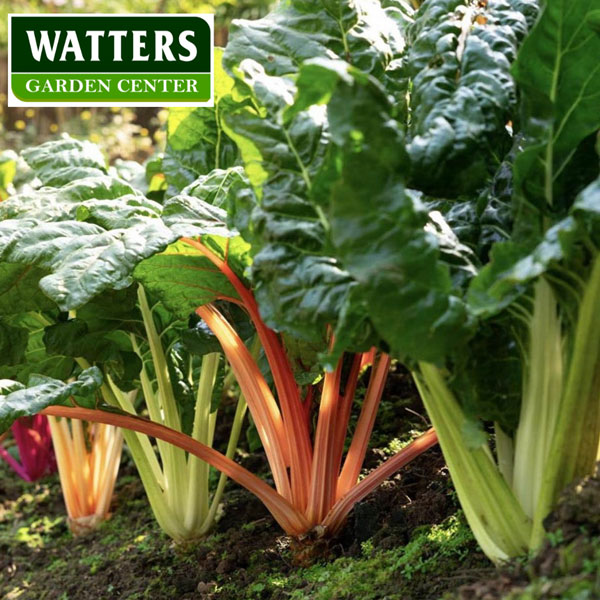Big Idea
- What vegetables are good for the fall garden? Fall vegetables to plant in Arizona.
- What type of vegetables can I plant in the Autumn? Vegetables to plant in fall for spring harvest.
- What can I plant in my raised garden in the fall? When should I plant fall winter vegetables?
- List of vegetables to plant in Autumn.
- Read more…
Get your fall garden planted!
There are lots of vegetables that grow well through the cool autumn weather. Some plants need longer days and a bit warmer soil to really get started, but all produce through the end of the year. You can start seed in August by growing your starts in a cool shady spot in the garden. We also have seedling starts ready for transplant here at Watters Garden Center through October. Plant them in the garden as space as your summer plants fade.
Plant seeds deeper in the fall than in the spring. Typically, the ground is warmer, having just come off the hot summer months. By planting your seeds a little deeper than the package suggests, you'll be able to get them down to where the soil is cool and moist.
Best Vegetables to Grown in an Autumn Garden

Beets, Beta Vulgaris, are best grown from seed without disturbing their roots once sprouted. Although beets grow in the summer heat, they are often bitter and woody. Late summer to early fall is the best time to resume succession planting at two to three-week intervals. Beet bulbs keep growing in the garden until a deep freeze. Even the tops handle frost.
- USDA Growing Zones: 2–11
- Sun Exposure: Full sun, partial shade

Bok Choy, Brassica rapa, is well-suited to fall planting. The so-called "baby" bok choy varieties proliferate, reaching about eight inches in height in about 40 days. They revel in the cool autumn weather, as well as the decrease in pesky leaf insects that can sometimes influence their success. Since they won't bolt to seed as quickly as they may in warm spring weather, you can harvest the heads as you need them.
- USDA Growing Zones: 2–11
- Sun Exposure: Full sun, partial shade

Broccoli, Brassica oleracea, grows best in cool weather. Fall planting has two big advantages over spring planting when it comes to broccoli. There is no risk of early spring frost that often stunts the growth of young broccoli plants, so plants get off to a strong start. As your florets form, the cool autumn air keeps them from bolting into flowers, giving you more time to harvest. Broccoli does take several weeks to mature, so transplant a quick-grower, like Waltham, for a timely fall harvest.
- USDA Growing Zones: 3–10
- Sun Exposure: Full sun

Cabbage, Brassica oleracea, Autumn is the perfect growing weather for cabbage. While plants can grow in warmer weather, they need cooler temperatures to form a head. Cabbage needs anywhere from 90–120 days to mature, so a fall crop will be most likely if you transplant seedlings in mid-to-late summer. Most varietals in the cabbage family are hardy enough to handle light frost, so, with any protection, you can harvest them well into winter. Though they won't continue to grow when it's cold, they'll retain their freshness and get even sweeter.
- USDA Growing Zones: 1–9
- Sun Exposure: Full sun, partial shade

Carrots, Daucus carota, are not the quickest growers, but some smaller varieties, like Thumbelina and Paris Market, mature in just 50 days. Another option for growing traditional carrots is to sow them first in containers. Long window boxes with a depth of at least 6" are great for getting your seeds started until you can plant them in your garden in early fall.
- USDA Growing Zones: 3–10
- Sun Exposure: Full sun, partial shade

Cauliflower, Brassica oleracea, fall is typically a better time to grow cauliflower than in the spring, as the cool weather keeps the heads tight and tender. Cauliflower is a slow grower, often taking 2-3 months to mature. Plant them in early Autumn for best results. Pluck the cauliflower when its head reaches the desired size and its buds are still tight.
- USDA Growing Zones: 2–11
- Sun Exposure: Full sun

Green Beans, Phaseolus vulgaris, are two different types of green beans typically fostered by gardeners. Pole beans need a long growing season, allowing the vines to reach a mature height before setting beans. On the other hand, Bush varieties produce in as little as 45 days, making them excellent candidates for a fall crop of beans. Bean plants are too tender to handle frost, so if an early frost threatens, toss a row cover over them until the temperatures climb again.
- USDA Growing Zones: 2–10
- Sun Exposure: Full sun

Kale, Brassica oleracea, is probably the easiest cold crop to grow. The seeds quickly germinate in warm and cool soil. As Autumn turns to winter, kale leaves maintain their great leaf texture with a flavor that only sweeter and deepens with every cold night.
- USDA Growing Zones: 7–9
- Sun Exposure: Full sun, partial shade

Lettuce, Lactuca sativa, can be planted pretty much all season. Most varieties take less than 50 days to mature, so you can start planting the seed in mid-August and succession plant into the fall months. Due to shorter days and lower temperatures, the plants may grow slower than spring lants, but the flavor will be sweeter and crisp. Because lettuce has shallow roots, it will require some protection against frost. Suppose you plant your fall lettuce in pots. In that case, it's effortless to move it indoors to protect it from freezing temperatures. Otherwise, you can cover it with burlap or another netting if frost is expected.
- USDA Growing Zones: 4–9
- Sun Exposure: Partial shade

Peas, Pisum sativum, are another vegetable that loves to luxuriate in cool weather. Many short varieties are ready to harvest within 50 days. Peas germinate quicker while the soil is warm but needs more water and a little protection from the intense sun while they are young. When they are ready to start flowering and forming peas, the days and nights should be the perfect temperature in fall to keep them going.
- USDA Growing Zones: 2–9
- Sun Exposure: Full sun, partial shade

Radishes, Raphanus sativus, proliferate in cool, moist soil. Most of the problems associated with growing radishes in the spring, like a woody texture, hot or bitter taste, and small size, are alleviated by sowing them in the fall. Harvest radishes in late fall or early winter, or allow them to over-winter in the soil and harvest next spring.
-
USDA Growing Zones: 2–10
-
Sun Exposure: Full sun

Spinach, Spinacia oleracea, often bolts in teh summer heat. You are going to love growing spinach in the fall. Spinach only takes about 30 days to mature, even less if you like smaller tender leaves. You can get in several successions of spinach throughout the fall months. Spinach seeds are also perfect for winter sowing.
- USDA Growing Zones: 2–9
- Sun Exposure: Full sun

Swiss Chard, Beta vulgaris, if you've already harvested your swiss chard as cut-and-come-again, you won't need to reseed in Autumn. The plants have slowed down during the summer heat. With just a bit of cool air and water, they'll ramp back into production come fall. They may even survive the winter but harvest them quickly in spring before they start to bolt to seed and get harsh and bitter.
- USDA Growing Zones: 3–10
- Sun Exposure: Full sun, partial shade

Turnips, Brassica rapa, are root vegetables, meaning they need a long season (100 or more days) to mature. However, they grow the largest and most flavorful if they're allowed to mature in the fall. Since they are grown for their roots and their tops are mountain hardy, frost doesn't matter to this plant. They often taste sweeter after several cold nights. Turnips mature a little faster than their cousin, the rutabaga, and don't improve if left in the soil too long, so succession plant and use as they mature.
- USDA Growing Zones: 2–9
- Sun Exposure: Full sun
Watters: Website | Facebook | YouTube | Instagram | Pinterest
Upcoming Garden Classes

September 4 @ 9:30 am - Top 10 Trees and How to Plant them - Privacy, shade, color, evergreen, and blooms. We cover trees from every angle. With so many choices, picking the perfect tree can seem overwhelming, but not after this class. Our horticultural team will be on-hand after the class to help with individual tree situations. Free tree planting guide to all attendees.

September 11 @ 9:30 am – Climbers & Covers in the Landscape. Vines climb quickly up fence posts, pergolas, barbed wire, walls and trellis. They block, screen, and shade better than any other plants in the nursery, but not all vines are created equal. Learn these vines favorite locals, sun and shade lovers, and all the advice to get these bloomers climbing.

September 18 @ 9:30 am - Easy to Grow Mountain Plants – Rock landscapes without these core plants tend to look strange, immature and lacking. Learn how to garden with these simple, but effective planting combinations for a design that WOWs all four seasons of the year.

September 25 @ 9:30 am - Privacy Screens and the Secret Garden. Tired of looking at the neighbor's RV? This class shows off the best, fastest growing plants to fill in your privacy screens! You can screen unsightly neighbors, enhance your view, or block pesky traffic and cut noise and light pollution. Experts will be on hand to help individuals with unique situations.

October 2 @ 9:30 am - Fall ‘To-do‘ list for a Healthy Yard - Get the most out of your landscape with this easy to use checklist of fall care. Bring the color out of your fall gardens, reduce bugs next spring, or simply put your landscape to bed with these easy to use ideas.

October 9 @ 9:30 am - Autumn Colors Best Enjoyed at Home - Landscapes in autumn can be stunning, but only with proper planning. This easy care advice will bring the silver and blues out of the evergreens, showcasing brilliant bright foliage and crazy colored flowers. Make this the brightest fall of all!

October 16 @ 9:30 am – Fall Containers that Bloom like Crazy! After this class, you’ll have what it takes to design great container gardens that sparkle in the afternoon heat. Learn about proper watering, the best foods, companion plants, and more. Everyone is going to comment on your potting success! Bring your own container or buy one new and we'll have design stations open, with expert advice on hand.

October 23 @ 9:30 am – Succulents, Cacti and the Low Maintenance Garden are all the rage right now, and a great choice for busy gardeners! These are the toughest, drought-tolerant plant that will grow like gangbusters in a tight space with very little care. Students will learn how to use the local favorites that brings warm color and texture to your home.

October 30 @ 9:30 am – Showy Shrubs of Autumn - Shrubs are the backbone of a good design. They provide essential structure, beauty, fragrance and color with a great variety of shapes. Rock landscapes without shrubs tend to look strange, immature and lacking. Learn how to use shrubs to create simple but effective planting combinations for a design impact that will WOW all four seasons of the year. Free to gardeners that want more from their yard.














































